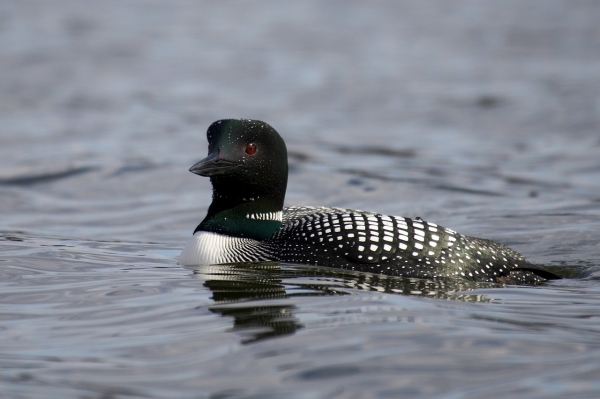The Common Loon, an icon of the northern wilderness, is under threat from climate change due to reduced water clarity, according to a new study authored by Chapman University professor, Walter Piper.
The Common Loon, an icon of the northern wilderness, is under threat from climate change due to reduced water clarity, according to a new study authored by Chapman University professor, Walter Piper. The study, published April 1 in Ecology, followed up an earlier paper that showed substantial reproductive decline in the author’s study area in northern Wisconsin.
The paper is the first clear evidence demonstrating an effect of climate change on this charismatic species. Specifically, the paper shows that July rainfall results in reduced July water clarity in loon territories. Reduced water clarity, in turn, makes it difficult for adult loons to find and capture their prey (mainly small fishes) under water, so they are not able to meet their chicks’ metabolic needs. The result is low chick weight and higher chick mortality. Since loons use the same foraging mode across their breeding range, the impact of water clarity on loon breeding success found in Wisconsin is likely to be echoed from Alaska to Iceland.
Piper, in collaboration with Max Gline and Kevin Rose from Rensselaer Polytechnic Institute, reports several important findings. Over the past 25 years, there has been a consistent decline in water clarity. During the same period, body weights of adult males, adult females, and chicks have also declined. By searching among a large number of environmental variables, the authors were able to pinpoint mean water clarity during the month of July – the month of most rapid growth in chicks – as the strongest predictor of body weight. In a separate analysis, the authors found that rainfall in July impacts water clarity negatively. That is, heavy rainfall in July results in reduced water clarity, whereas light rainfall leads to high clarity and good foraging conditions for loons. Consequently, the rise in rainfall observed in recent decades, attributed to climate change, poses challenges for adult loons in feeding their offspring and diminishes chick survival rates.
Read more at Chapman University
Photo Credit: Andrew_Patrick via Pixabay




